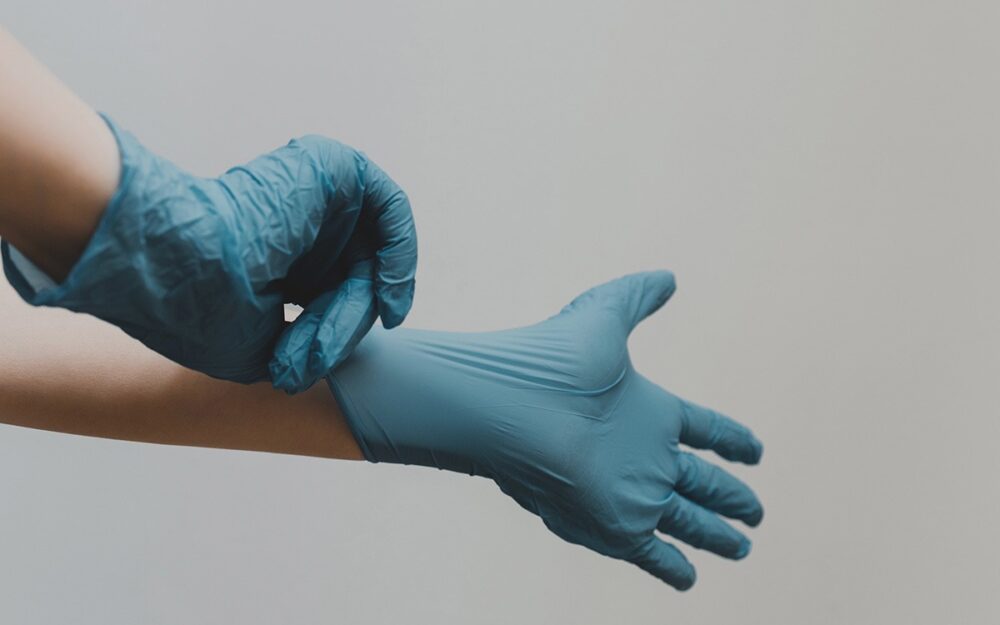
Some of the most aggressive and widespread debt collection tactics in the United States are those taken on behalf of nonprofit hospitals. Increasingly, these hospitals, granted tax exempt status partly because of the benefits to society they purport to convey, are teaming up with for-profit debt collection companies and employing some of the most notorious tactics, from aggressive phone calls to lawsuits and wage garnishments.
Some 100 million Americans—roughly one in three, and closer to 40 percent of adults, according to reporting by the Kaiser Family Foundation Health News and NPR—are saddled with some amount of medical debt, while the number of Americans who live just one unlucky medical bill away from accruing such debt is even larger.
The numbers are even more staggering when it comes to people of color, particularly Black Americans, with 56 percent owing money for a medical or dental bill.
The reasons for these racial disparities are complex, notes Bernetta Haynes, senior attorney at the National Consumer Law Center (NCLC) and author of the report, The Racial Health and Wealth Gap: Impact of Medical Debt on Black Families. The fact that Black families have, on average, less wealth than White families is a big part of the picture.
“When medical bills strike, they are more likely to present a financial hardship for Black families than for White families because of the of the wealth gap, because of the fact that Black households have less money in savings,” Haynes tells NPQ. This issue is further complicated because Black families are also more likely to be uninsured or underinsured and suffer chronic health conditions that result in high medical bills.
Our healthcare system is now generating medical debt on an industrial scale.
Meanwhile, the United States is without peers internationally in the extent and depth of its medical debt crisis. Socialized healthcare in most other wealthy countries means that medical debt is minimal or essentially non-existent as a widespread issue. This past June, the international NGO Human Rights Watch condemned the current state of American medical debt, describing the situation as depriving American patients of human rights.
Despite the magnitude of the US medical debt problem, its scope—and the role played by hospitals, mostly nonprofit institutions, in creating and monetizing that debt—has remained largely hidden. But reporting in recent years has shed new light on the extent to which medical debt has become big business and the role nonprofit hospitals have played as a driving force behind the change.
“Our healthcare system is now generating medical debt on an industrial scale,” Noam Levey, senior correspondent for KFF Health News, tells NPQ. “And a good part of that is coming from not-for-profit health care,” adds Levey, whose reporting, much of it in partnership with NPR, has dug deep into the scope and depth of medical debt in the US.
If the Hippocratic Oath in healthcare is to “do no harm,” Levey notes, “I think there is a there is a fundamental question about the sort of underlying ethos of a system that sort of purports to take care of people, that then leaves them with huge amounts of debt, which we now we increasingly know is not only devastating to people’s financial lives, but can have just devastating consequences for their health and wellbeing.”
Patient Debt: A Big Business
Traditionally, hospitals were outside the business of debt and debt collection, says Levey. But the landscape has changed drastically.
On the one hand, patient bills have grown, thanks in no small part to the rise of high-deductible insurance plans, which can leave patients holding bills they can’t immediately pay, if at all.
On the other hand, hospitals have changed. “One of the bigger issues that happened in healthcare over the past couple of decades is that these not-for-profit hospitals have grown into behemoths, with billions of dollars in revenue,” Levey notes. “And increasingly, it’s difficult to distinguish between for-profit hospitals, of which there are a number as well, and not-for-profits, both in terms of how they look, how they behave, how they pay their executives and how they price.”
In 2022, KFF Health News published results from a survey conducted by the news organization of some 500 nonprofit hospitals across the US. The results paint a picture of nonprofit hospitals—designated “charitable” organizations by the IRS—as aggressively pursuing patient debt.
“Basically, two thirds of hospitals will take some kind of legal action. One in five will deny non-emergency care to people with outstanding debt, and a quarter will sell that patient debt,” says Levey.
The consequences of such financial arrangements can be devastating for patients.
Selling patient debt to private, for-profit debt collection companies is a relatively new financial venture for hospitals, one with profound implications for the patients holding that debt. “What happens when a hospital sells patient debt is they essentially wash their hands of it—these companies buy it and then they can engage in all manner of collection activities against these people,” says Levey—all without the hospital’s name attached to such aggressive legal tactics.
NCLC attorney Haynes agrees, noting that medical debt can even result in civil arrest warrants. “We’re talking about things like wage garnishment, bank account seizure, property liens on homes,” Haynes tells NPQ.
Another tactic increasingly employed by hospitals involves partnerships with third-party for-profit lending and collection companies that offer to put patients on payment plans—plans that generally come with steep interest rates and penalties. In the past, hospitals offered and handled interest-free payment plans in-house. Now, increasingly, they are only too happy to hand over responsibility for these plans to for-profit companies.
Sign up for our free newsletters
Subscribe to NPQ's newsletters to have our top stories delivered directly to your inbox.
By signing up, you agree to our privacy policy and terms of use, and to receive messages from NPQ and our partners.
With these companies, Levey notes that “if you miss a payment or you don’t pay off the whole balance by, say, 24 months, your interest rate is going to jump up to 25 percent [or more], which is obviously huge.”
One of the latest innovations to emerge—and take advantage of the lucrative US medical debt landscape—is the rise of medical debt credit cards, often promoted and issued in doctors’ offices and hospital rooms. These offer lines of credit managed by for-profit companies and often carry severe interest rates and penalties, arrangements many have called predatory given the often-urgent conditions that could make especially low-income patients feel pressured to sign. This June, a group of Democratic senators asked the federal Consumer Financial Protection Bureau to investigate the practice of issuing such credit cards.
The system is creating a health risk for the patients it purports to serve.
The consequences of these financial arrangements can be devastating for patients, who risk losing their wages and even their homes. Levey points to research showing that cancer patients who got into medical debt died more quickly than those who didn’t have medical debt.
“And so, we know that you have a situation in which that the system is creating a health risk for the patients it purports to serve,” Levey tells NPQ.
A Lack of Oversight
While some mechanisms are in place to protect US consumers from predatory credit instruments, the landscape of medical debt sees little scrutiny and enforcement by federal or local authorities.
The 2010 Affordable Care Act (ACA) set in place some requirements for nonprofit hospitals to offer financial assistance to patients and make public such assistance, as well as the kinds of collection activities the hospitals pursue, such as suing patients and garnishing wages.
But according to Levey, the law was low on specifics.
“The problem was that it didn’t set any standards for what financial assistance should look like,” says Levey, noting that the ways financial assistance may or may not be made available to patients vary widely, hospital by hospital, and are not obvious to the average patient.
Indeed, many hospitals either lack clear policies around informing patients of potential financial assistance or have policies that put the onus on patients to seek out and apply for such financial aid, with the result being that “it’s very it’s very difficult for patients to know any of this stuff,” shares Levey.
As Haynes points out, hospitals often fail to do due diligence, required by law, in determining patient eligibility for such assistance. “The Affordable Care Act essentially requires hospitals to determine whether a person qualifies for financial assistance before they take what the ACA refers to as the extraordinary collection actions like wage garnishment and so forth. The problem is there’s no enforcement.”
And when it comes to nonprofit hospitals, that enforcement falls largely to an agency already struggling to enforce the law: the Internal Revenue Service.
“The IRS, as everyone knows, has historically been a hugely overburdened agency that’s under-resourced. It doesn’t have any particular expertise in health care,” notes Levey.
“At the federal level, there’s just not a thirst, there’s not a hunger for action on this front,” adds Haynes. “So, we’ve been very focused on state level efforts.”
Some state-level efforts, such as those in Maryland, California, and Maine, have taken steps to mitigate some of the worst consequences of medical debt, including restrictions on negative credit reporting for medical debt and prohibitions on wage garnishment and civil arrest.
Despite the evidence of their role in the creation and collection of US medical debt, nonprofit hospitals are not accustomed to being perceived as being on par with for-profit credit and collection companies. These hospitals, after all, are often viewed as pillars of their host communities—charitable institutions serving the public good.
“There’s this incredible amount of defensiveness by not-for-profit medical institutions that essentially say, ‘How dare you question what we’re doing?’” notes Levey. “‘You’re equating us to, you know, to oil companies and rapacious Wall Street firms, and look at the good that we’re doing. And it’s not our fault.’”
And the issues driving medical debt are complex and deeply rooted in the American system of mostly private healthcare, Levey acknowledges. But by casting blame elsewhere, he says, hospitals have downplayed or ignored their own role in saddling their own patients with debt and aggressive debt collection.
“And I have found a disturbing lack of introspection, frankly, by leaders in healthcare about this problem,” notes Levey.











